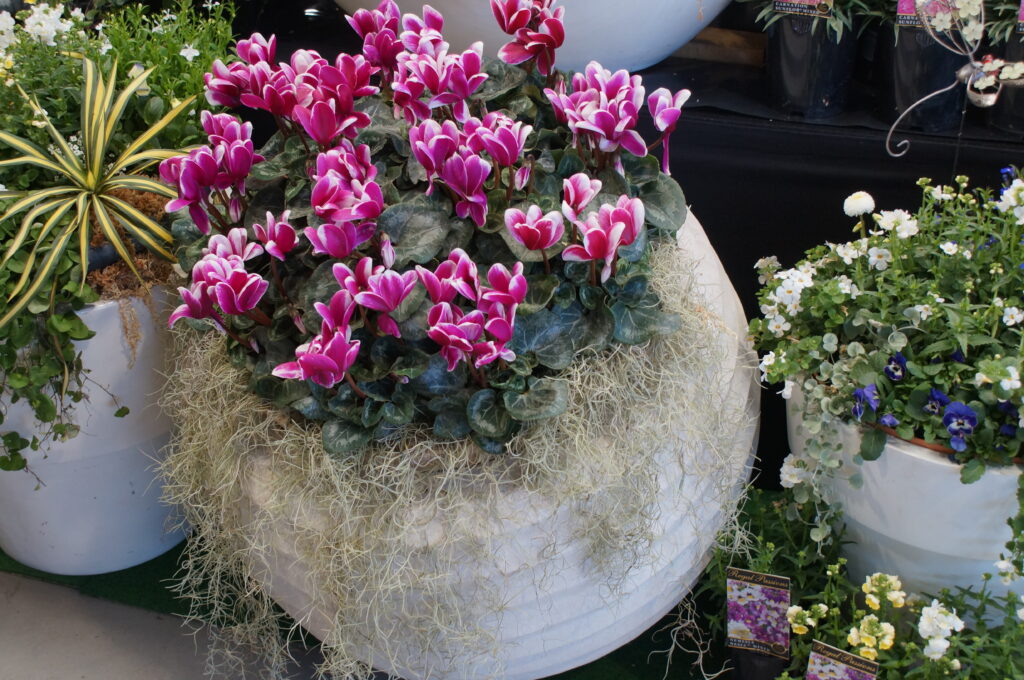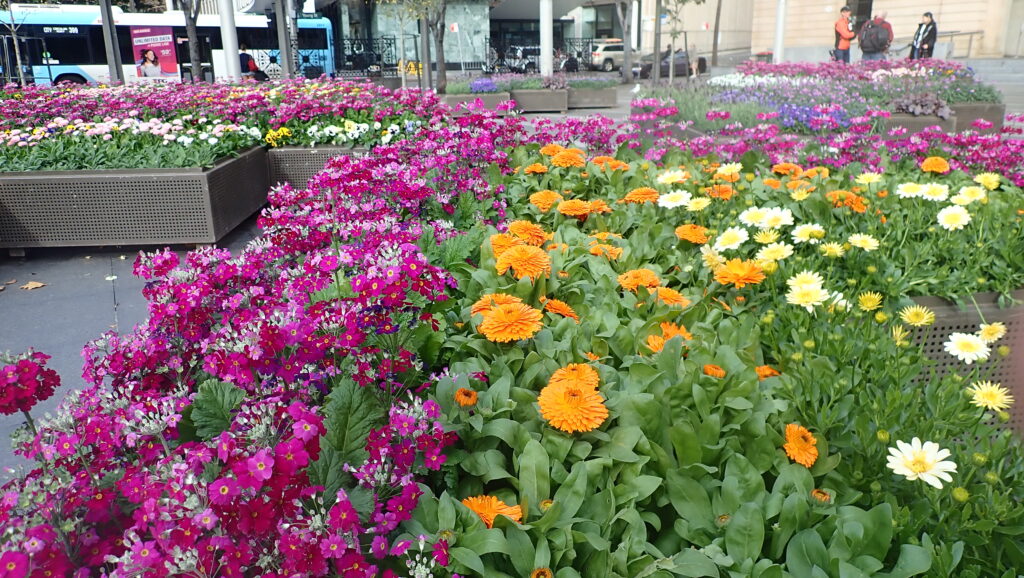Be alive with colour!
At the time of writing most of us are still living under the uncertainties of the COVID-19 pandemic. However, positive messages are getting through. Many are hoping and planning for an improving trend heading to year’s end. It’s therefore also understandable that such positivity is reflected in lightness, brightness and colour. So, bring it on! Go big! Be alive with colour!
Many of us already have personal and professional attachments to certain colours and forms, and growing specialities. That’s not to say innovation is not welcome, nor that old favourites or historical options can’t be put back into the spotlight again. Look again into your archives, talk to the breeders, rediscover the further corners of your mother-stocks. Broaden your colour palette to the max.
Dural-based, The Green Gallery nursery in NSW, is well placed to accommodate such trends. The nursery’s Jeremy Critchley commented that they specialise in “all colour”. While they will always respond to demand for old favourites and proven performers, Jeremy said they pay close attention to new and innovative lines based on the latest local and international (Europe, Japan, USA) genetics from breeders and propagators, including Ball Australia, HighSun and Propagation Australia.
While The Green Gallery grows more than 1500 lines, and whatever the demand trends for colour or form are, demand will always be highest for quality-grown greenlife that performs, Jeremy commented.

‘Cheap’ is easy to find, so we have found that contract growing of quality plants is a growing part of our business, he added.
This approach has, among other successes, led The Green Gallery to supply greenlife to many special projects including the City of Sydney’s ‘Living Colour’ streetscapes, and the Royal Botanic Garden Sydney’s floral displays in The Calyx, Australia’s largest indoor green wall standing at 6 metres high and stretching 50 metres wide.
“The newer selections meet high demand because they make gardening easier. The breeders are delivering more benefits like low maintenance (e.g. self-cleaning), better drought tolerance and pest and disease resistance,” Jeremy said

With a broad customer base among wholesale and retail nurseries from Queensland to South Australia, Jeremy also confirmed that the indoor plant category has boomed in recent times, along with supply to online retailers. While still growing in popularity, most indoor lines are “1970s re-hashed”, Jeremy commented.
“COVID-19 has actually had a positive impact on our business,” he commented, “As we saw in 2008’s Global Financial Crisis people’s focus was re-directed to homes and home offices.”
So, with our eyes on a brighter tomorrow, let’s also re-visit the basis of plant colours.
At base, floral colours are associated with the plant’s reproduction. Bright colours and sweet pollen attract pollinators. If the plant’s reproduction is by air, water or indirect animal activity (e.g. seed removal and transfer) then, usually, its floral attributes will be less striking or even inconspicuous.
Colours represent pigments. The pigments present in a plant are primarily linked to its genetic makeup. Usually, lighter colours represent fewer pigments. Plant pigments tend to be strong antioxidants. Common floral pigments include:
- Anthocyanins which can result in colours ranging from white through red and blue or yellows, to darker purples, blacks or browns. They are best known as the red pigment in autumn leaves. They are much less stable than carotenoids and are sensitive to changes in environment and/or plant health. They can be very sensitive to heat. High temperatures and bright sunlight can destroy certain anthocyanins. These water-soluble pigments are stored in the vacuoles of petal cells and change colour with pH.
- Carotenoids are often responsible for brighter yellow, orange, and reds. Lesser amounts deliver soft yellow flowers; as pigment levels increase, flowers become increasingly vivid yellows, oranges, and reds. While the concentration of various carotenoids will affect the depth of colour, individual carotenoids can affect the actual hue, e.g. lycopene is a deep red, zeaxanthin is orange. Low concentrations of both lycopene and zeaxanthin will appear yellow. Carotenoid production increases in response to heat and light. The hotter and sunnier it gets, the more carotenoids a plant produces, the more vivid oranges and reds will get. When weather cools off, carotenoid production decreases and colours then trend to softer oranges and yellows.
Colours can result from anthocyanins or carotenoids or a combination of these. For example, it has been found that yellow-orange carotenoids are often associated with purple anthocyanins to produce red flowers.
- Betalains are found in plants of the order Caryophyllales that includes cacti, carnations, amaranths, beets, and many carnivorous plants. Many Caryophyllales are succulent with fleshy stems or leaves. Betalains are also found in some fungi. They can be present in petals, fruits, leaves, stems or roots of plants. They produce distinctive and different shades of red or purple to those resulting from anthocyanins. Research has shown some associations between betalains and fungicidal activity, and fluorescent blooms. Betalains are chemically unrelated to anthocyanins.
Other factors affecting how colours present themselves includes the amount of light flowers receive through the growing period, environmental temperatures and soil pH.
Various environmental stresses also affect floral colour outcomes, including moisture shortage or deficiency, nutrient availability (e.g. iron, magnesium, calcium) and nutrient imbalances.
Botanical and genetics researchers are still constructing the evolutionary history of flower colours, ‘tracing the genetic pathways by which plants make flower colours and identifying genetic changes to see if there are common mechanisms.’
But over all of this understanding is a rider – the visual result of the eye and the brain working together. Humans can usually ‘see’ all colours in the visible spectrum. However, each individual perceives colour differently, Thus a bloom may appear to be a vibrant red to one person, while being seen as a more muted tone to another.
Plant nutrition and flowering
Of the key plant nutrients (N:P:K) phosphorous (P) is most related to the plant’s reproductive parts – flowers, fruit and seeds. In comparison, nitrogen (N) is needed for strong, healthy leaf growth. Potassium (K) actually improves the quality of flowers already produced. It can enhance and deepen flower colour.
It should however be noted that balance is needed. An excess of phosphorus can result in extensive roots, fewer shoots, and stunted growth, while a deficiency can lead to fewer flowers or aborted flowers, no fruits, and poor root growth.The story of floral colour is a broad and complex one. So dig deeper into the existing and emerging knowledge base, or just stick with enjoying the truly fantastic outcomes.

